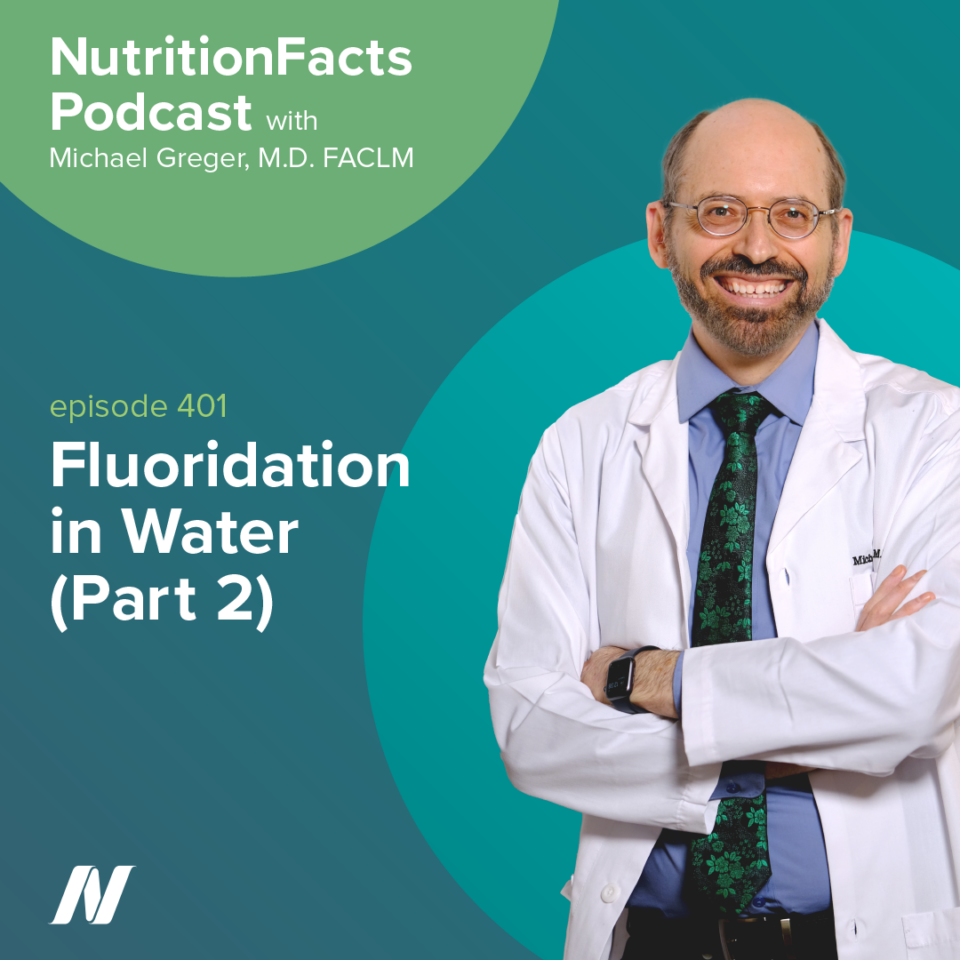Today, it’s Part 2 of our series on fluoride in water., And, we’ll start with some new research that has helped me change my mind about the safety of fluoridation.
Community water fluoridation recently hit its 75th anniversary, touted as a significant advancement in public health, but new research suggests the potential for adverse health impacts. There is little question that supplemental fluoride strengthens teeth and reduces decay. But at what cost? Most of the older studies were snapshot-in-time studies, looking only at group-level data, or were based on higher-than-normal exposure. This has since changed with the publication of prospective studies following individual exposure levels from mother-child pairs over time.
The first few were from Mexico and correlated higher fluoride levels in the urine of pregnant women with future developmental delay in their infants. They found worse cognitive performance at age four and lower IQ from ages six through 12. But the fluoride was from fluoridated salt, or water sources where fluoride was present naturally. Then, this study came out of Canada, the first prospective study using individual exposure data dealing directly with community water fluoridation receiving quote-unquote “optimally fluoridated” water. None of the municipal water fluoride levels exceeded 1.5 parts per million, and the vast majority—over 90 percent—were under the U.S. target of point seven.
Despite drinking “optimally fluoridated water,” the study of more than 500 mother-child pairs found that higher fluoride exposure during pregnancy, once again, appeared to translate into lower child intelligence, measured at ages three to four. The American College of Obstetricians and Gynecologists recommends pregnant women drink at least eight cups of water a day. Based on the Canadian study, following this advice with water at U.S. target fluoridation levels might result in as much as a 5-point loss in IQ.
The Canadian study was published in the American Medical Association’s pediatrics journal, the longest-running pediatrics journal in the country. The editor-in-chief defended its decision to publish the study “as testament to the fact that JAMA Pediatrics is committed to disseminating the best science…regardless, of how contentious the results may be.”
The Canadian Agency for Drugs and Technologies in Health issued a rapid response report, concluding that there is insufficient evidence to conclusively conclude that fluoride exposure at optimum levels affects neurological development. But that’s not what the Canadian study was saying. The researchers just suggested the “possible need” to reduce fluoride intake during pregnancy. As the accompanying editorial concluded, based on the new data, “a dispassionate and tempered discussion of fluoride’s potential neurotoxicity is warranted.”
What was the response from U.S. regulators? Within a month of the Canadian study’s release, the National Toxicology Program, which is part of the U.S. Department of Health and Human Services that evaluates substances for potentially harmful human health effects, released a draft evaluation of fluoride exposure and neurodevelopmental and cognitive health effects, and concluded that “Based on a systematic review of the evidence, the NTP concludes that fluoride is presumed to be a cognitive neurodevelopmental hazard to humans.”
So, we’ve gone from dismissing people who questioned the safety of water fluoridation as zealots or anti-science fanatics, to the official U.S. National Toxicology Program saying we should presume it’s hazardous. Now, this was just a draft report. To ensure the integrity of its report, the NTP asked the National Academies, probably our most prestigious scientific institution, to review it. The review raised a bunch of concerns, which was portrayed in the dental literature as “discrediting” the IQ research. But that’s not what the National Academies said. They explicitly said that their misgivings don’t mean that the NTP conclusion that fluoride should be presumed to be neurotoxic is incorrect; they just wanted some further analysis. So, in 2020, they redrafted their draft, and once again came to the same conclusion, presuming it’s a cognitive neurodevelopmental hazard based on the extent, consistency, and robustness of the IQ data. The National Academies then re-reviewed their redrafted draft, concluding it’s much improved, but urged the NTP to further improve the clarity of the document. And, we await the final NTP report.
In our final story, we look at medicine’s response to the changing science on fluoride safety.
The National Toxicology Program is part of the Public Health Service, in partnership with the CDC, FDA, and NIH, dedicated to the analysis of agents of concern to identify any toxic effects. How did the medical community respond to the draft conclusions in their recent systematic review that concluded that fluoride is to be presumed to be a cognitive neurodevelopmental hazard to humans, based on studies showing lower IQ scores among kids with higher fluoride exposure?
What do you do when current research contradicts public practices, when new evidence doesn’t conform with existing beliefs? Well, health authorities have continued to conclude that fluoride is unequivocally safe, despite the new studies in recent years linking fluoride exposure in pregnancy with adverse effects on fetal brain development. There are still papers on how to ‘sell’ fluoridation of the water supply, targeting social media and the person-to-person spread of fluoride “misinformation.” Search engines are to be encouraged, at the very least, to flag search engine results that point to water fluoridation health “misinformation” suggesting adverse effects. In promoting support for community water fluoridation, maybe we don’t even want to proclaim its safety for fear of raising questions about risks. I mean, if you’re saying it’s safe, then that begs the question, “Well, is it not safe?” Maybe we shouldn’t even talk about whether it’s safe.
The tendency to ignore new evidence that does not conform to widespread beliefs may be impeding our response to early warnings about fluoride as a potential developmental neurotoxin. But some are just so fixed in their views on fluoridation that they won’t reassess their stance, no matter what the latest research might show. Ironically, it was the anti-fluoridationists who were accused of their “anti-scientific attitudes,” but now it’s the pro-fluoridationists.
One of the most facile pro-fluoridation arguments I ran across is the suggestion that fluoride can’t be hurting IQs because over the last half century of fluoridation, IQ scores have been going up, rather than down. The jaw-dropping irony is that a substantial part of that rise may have been due to the removal of another neurotoxic element, lead. It’s worth remembering that the science surrounding the neurodevelopmental hazard of low-level lead exposure was also bitterly contested using the same kinds of arguments we see today in the fluoridation debate.
A few short years before leaded gas was effectively banned in the United States, a meta-analysis of lead exposure and child IQ only found 24 human studies, all cross-sectional, with a typical associated loss in intelligence of about four IQ points. The current data suggest a similar IQ loss from fluoride from an even stronger body of evidence.
A spokesperson for the American Dental Association responded to the new data by pointing out that some cities that have ended water fluoridation saw an increase in cavities. OK, but that’s kind of a strange response to data suggesting the potential for permanent brain damage in children. I mean, I know they are the dental association, but how could they so easily ignore the serious red flags of potential neurotoxicity for cavity reduction? This is not to say tooth decay isn’t a serious health issue, but there are ways to get the cavity-preventing benefits of fluoride without the risks. Since the primary benefits arise from topical contact with our enamel, but the primary risks arise from systemic absorption, we can follow Europe’s example and safely reap the rewards using fluoride toothpaste and mouthwashes. In Europe, 98 percent of the population drink unfluoridated water. Several countries, including France, Germany, the Netherlands, Denmark, and Sweden, banned fluoridation decades ago in favor of fluoride toothpaste, as of more than ten years ago, the official scientific committee on health risks of the European Union concluded that topical application of fluoride is most effective in preventing tooth decay and that there appears to be no obvious advantage in favor of fluoridating the water supply.

 Previous Podcast
Previous Podcast Next Podcast
Next Podcast